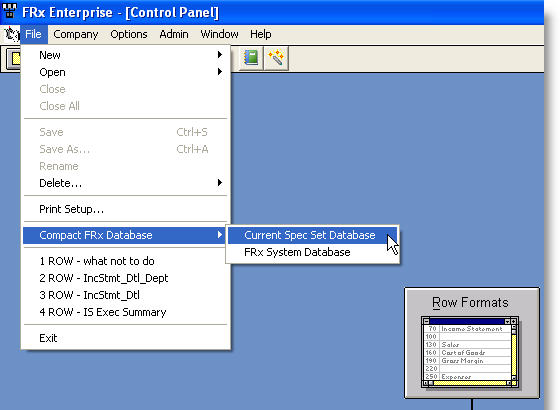Stay out of FRx trouble!
This tip is a different from the usual report design tips and tricks.
It’s all about avoiding problems.
The SysData directory contains the reports and components. Back it up. While this won’t exactly prevent corruption, it does prevent disaster. Don’t forget offsite storage.
And don’t forget to test the restorability of the media. As Dr. Bob Spencer from K2 Enterprises would say, “If it isn’t tested, it doesn’t exist!”
Know what this image is?

Answer: It’s one of the most important things you can do to keep FRx running smoothly.
Compact the spec set(s) regularly. This creates a new, clean file with the same structure, and this is less likely to cause errors or a loss of data. Shoot for weekly if FRx is being used regularly.
Here’s how: with users out, go to File, Compact FRx Database, choose Current Spec Set Database. That’s all there is to it! If you have companies that use different spec sets, log into those companies and repeat these steps.
For those familiar with Access databases, don’t do this compacting from within Access. Use the FRx user interface as this step does more for you than just compact.
Keep spec sets to a reasonable size. If too large, consider creating a new spec set. Then move some reports into it. Be sure to compact the original spec set after moving (deleting) reports.
After making changes to a report catalog, always SAVE the changes before generating the report.
Finally, exclude the FRx SysData directory from network virus scans.
So there you have it. Stay out of trouble!
back up